Abstract
1. O2 intakes were determined on subjects running and walking at various constant speeds, (a) against wind of up to 18·5 m/sec (37 knots) in velocity, and (b) on gradients ranging from 2 to 8%.
2. In running and walking against wind, O2 intakes increased as the square of wind velocity.
3. In running on gradients the relation of O2 intake and lifting work was linear and independent of speed. In walking on gradients the relation was linear at work rates above 300 kg m/min, but curvilinear at lower work rates.
4. In a 65 kg athlete running at 4·45 m/sec (marathon speed) V̇O2 increased from 3·0 l./min with minimal wind to 5·0 l./min at a wind velocity of 18·5 m/sec. The corresponding values for a 75 kg subject walking at 1·25 m/sec were 0·8 l./min with minimal wind and 3·1 l./min at a wind velocity of 18·5 m/sec.
5. Direct measurements of wind pressure on shapes of similar area to one of the subjects yielded higher values than those predicted from the relation of wind velocity and lifting work at equal O2 intakes. Horizontal work against wind was more efficient than vertical work against gravity.
6. The energy cost of overcoming air resistance in track running may be 7·5% of the total energy cost at middle distance speed and 13% at sprint speed. Running 1 m behind another runner virtually eliminated air resistance and reduced V̇O2 by 6·5% at middle distance speed.
Full text
PDF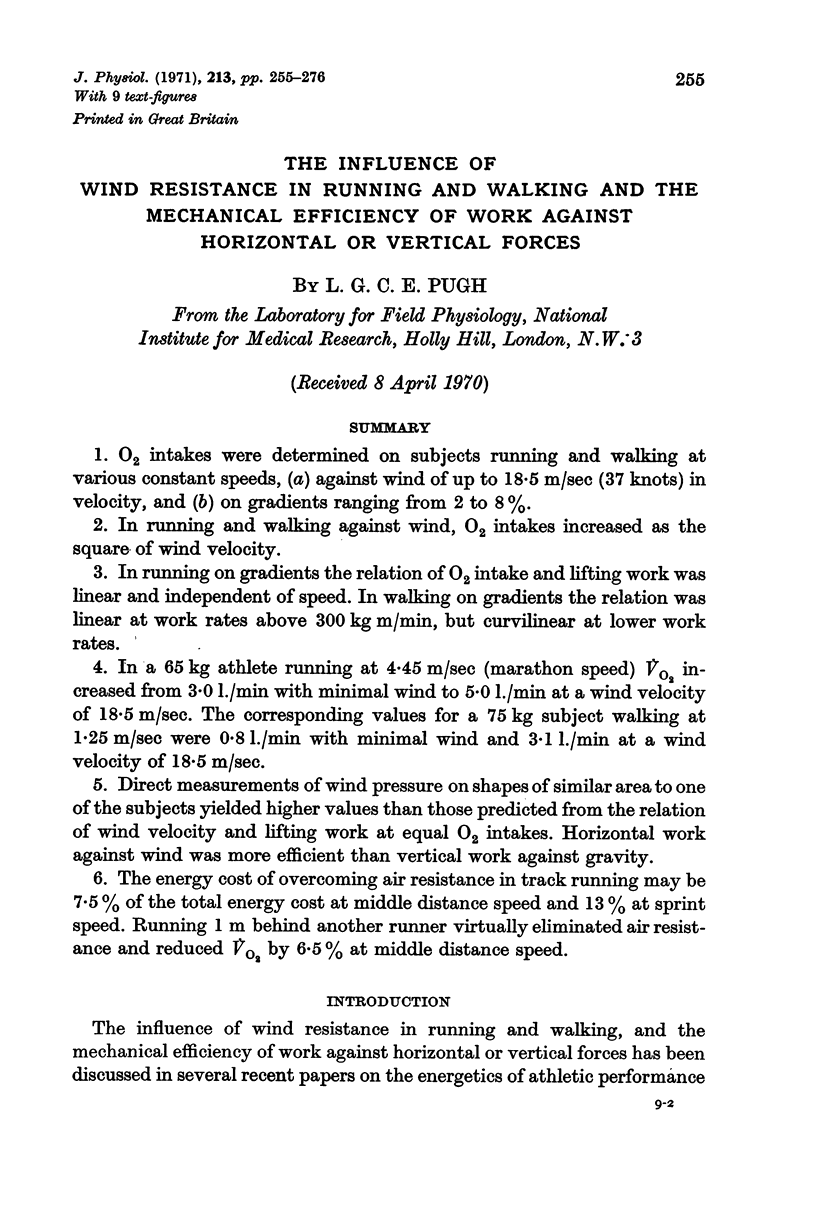
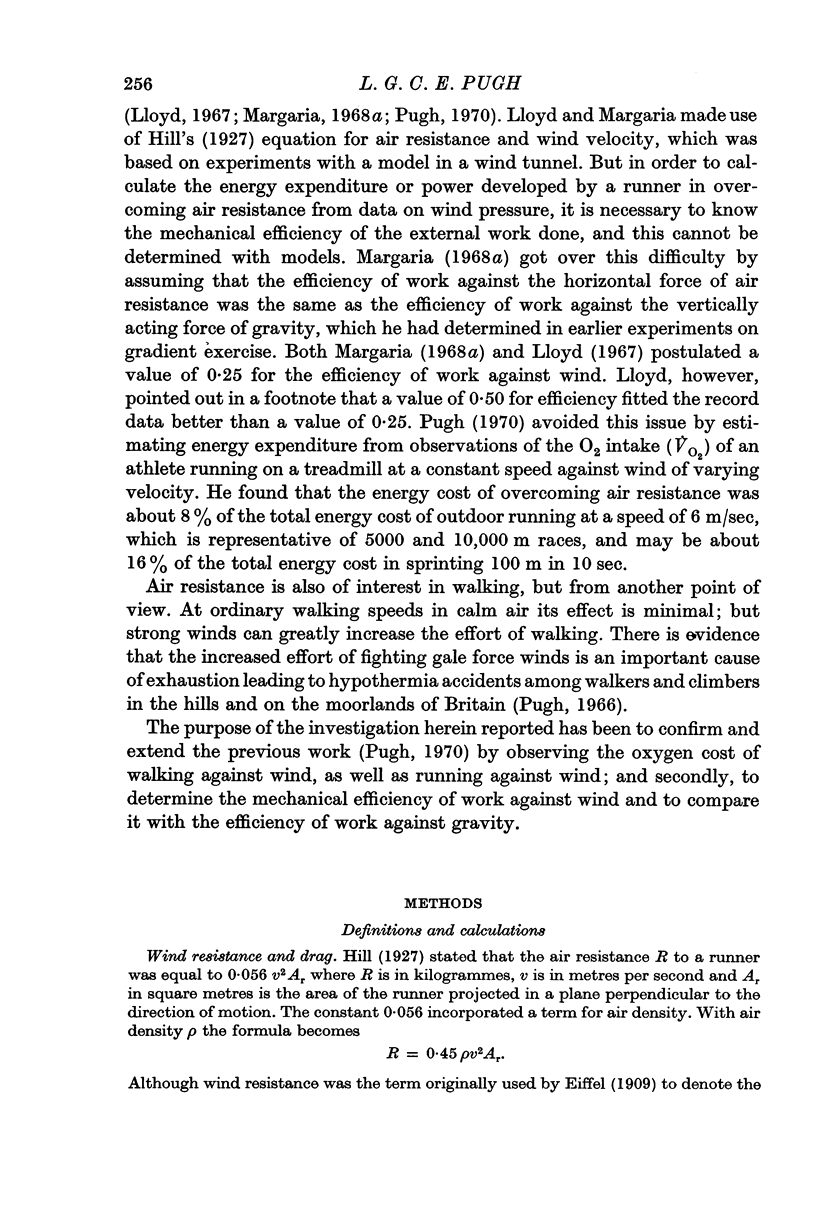
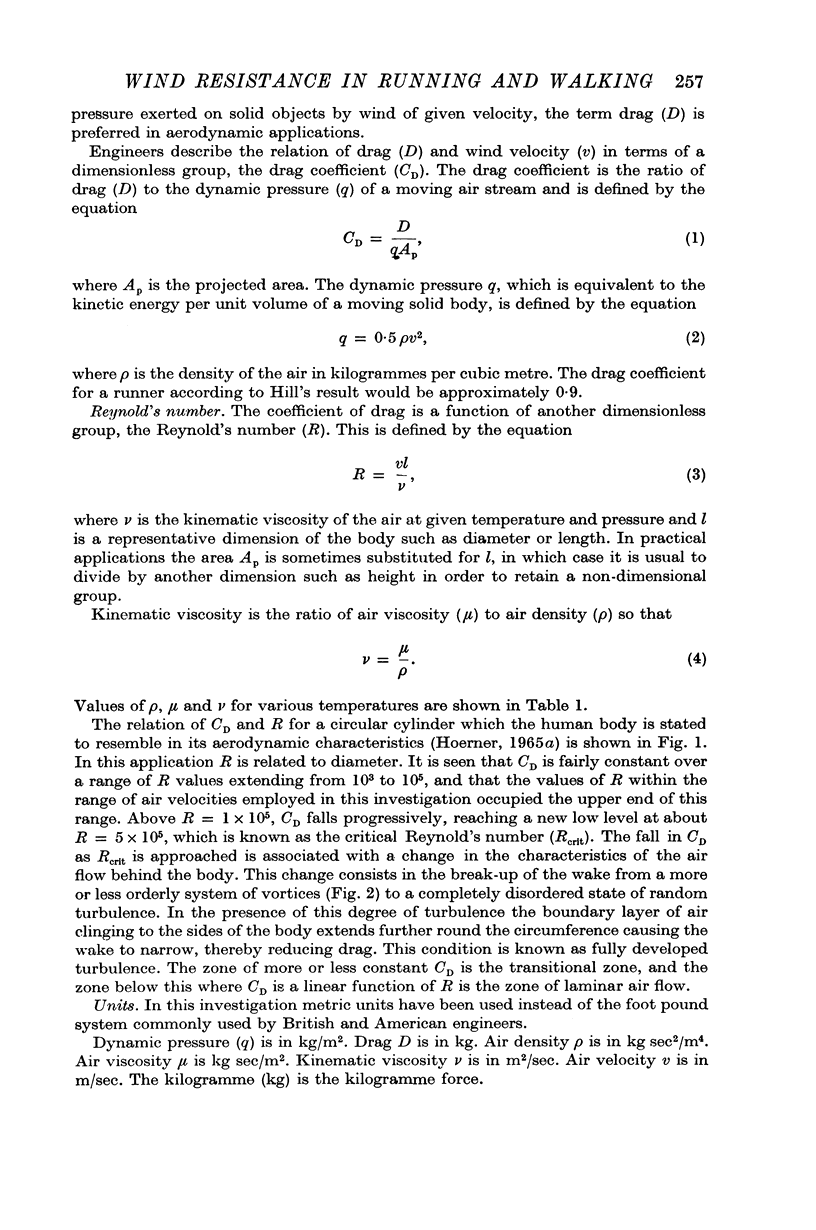


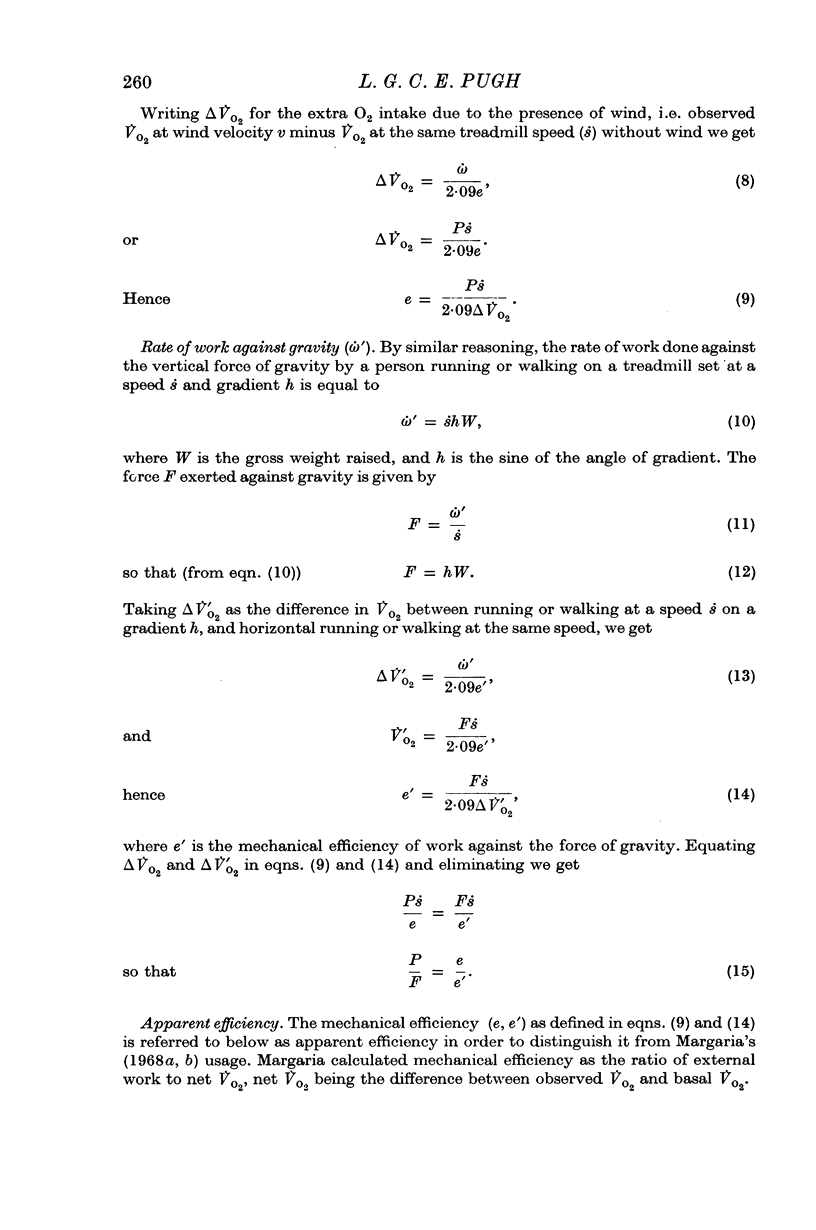
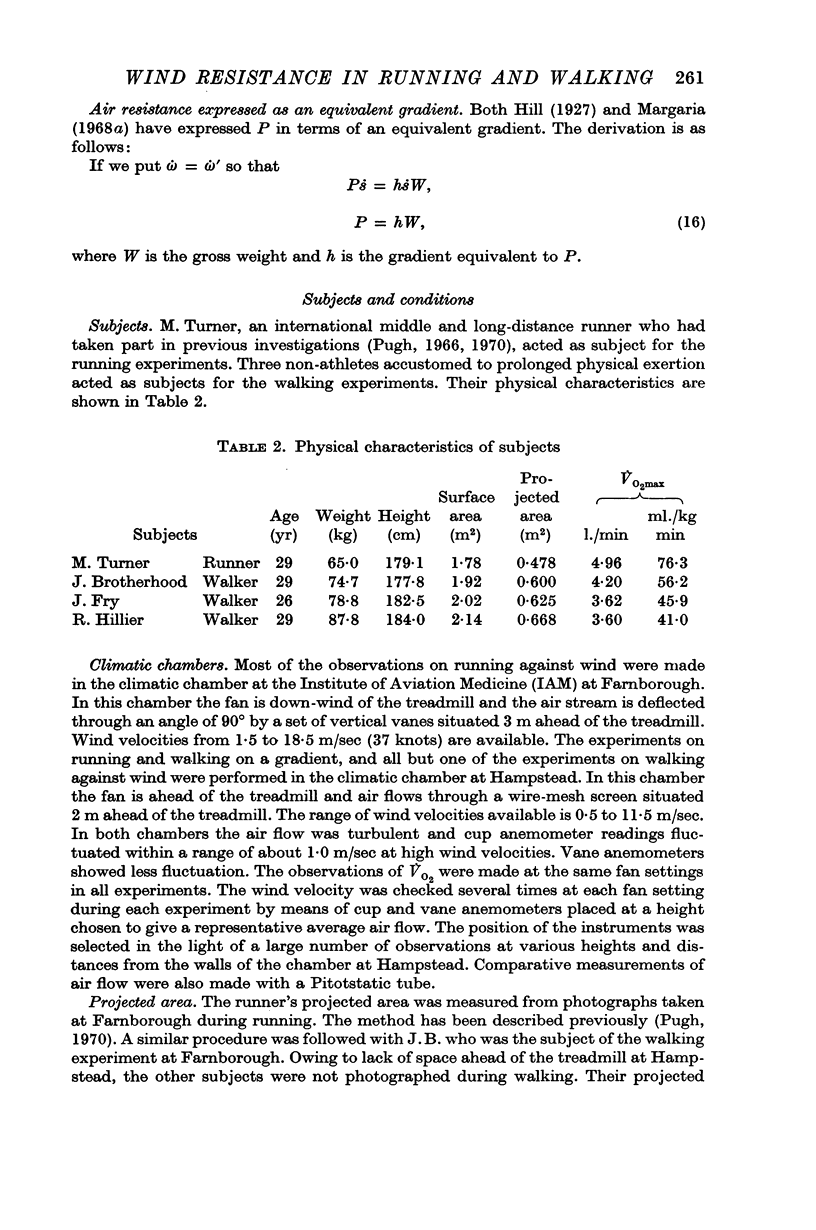

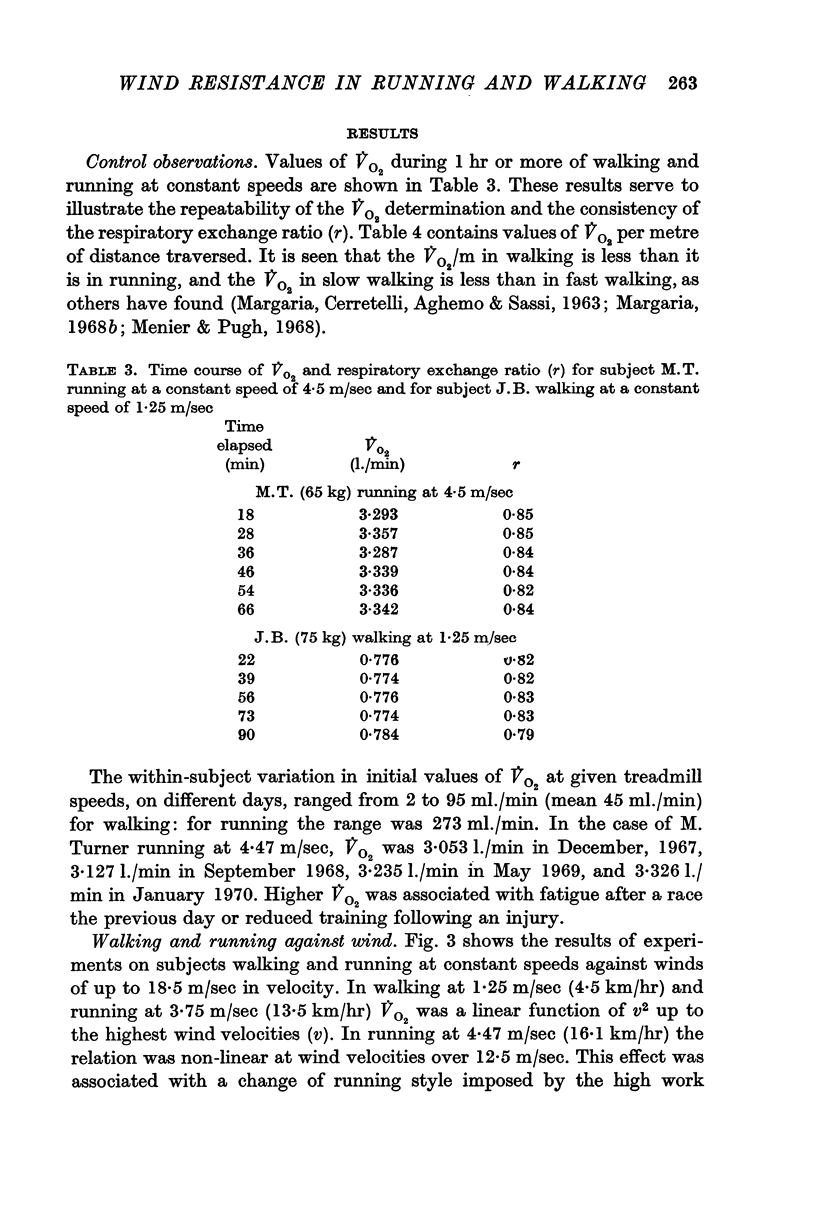

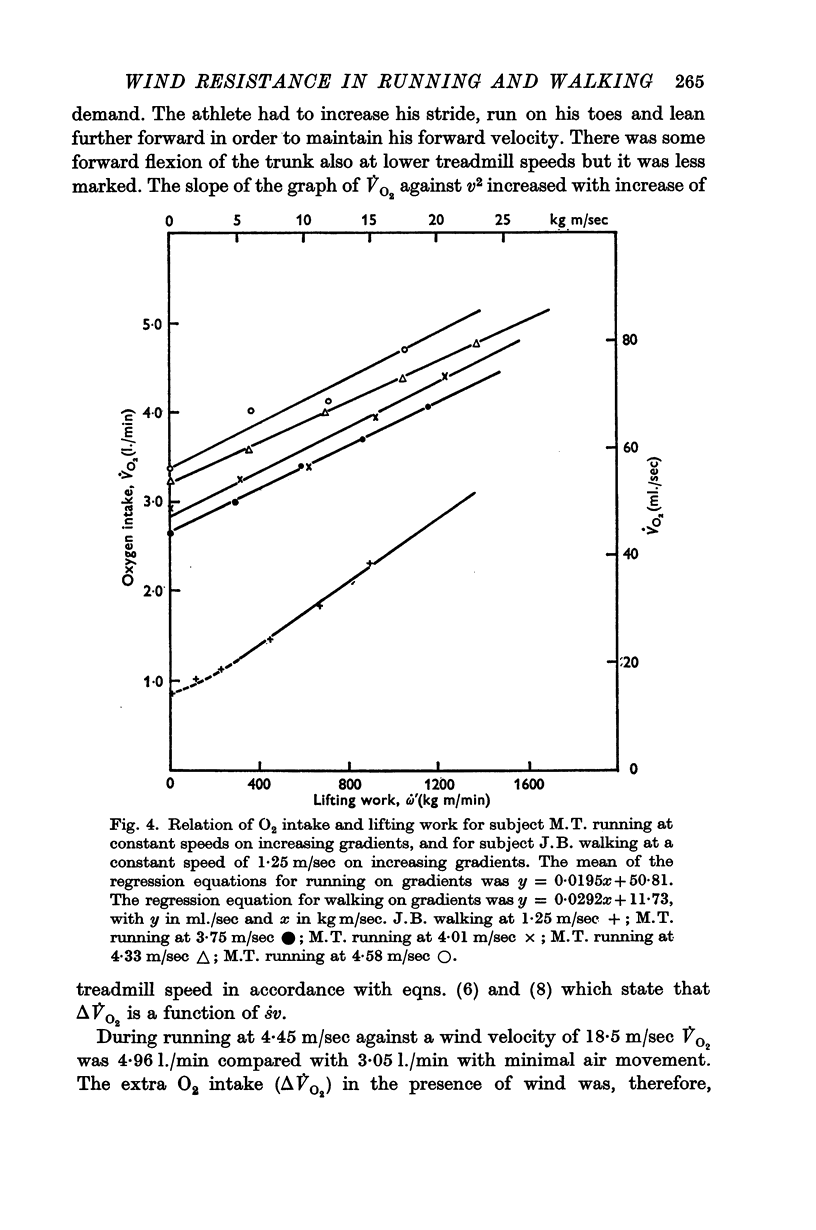
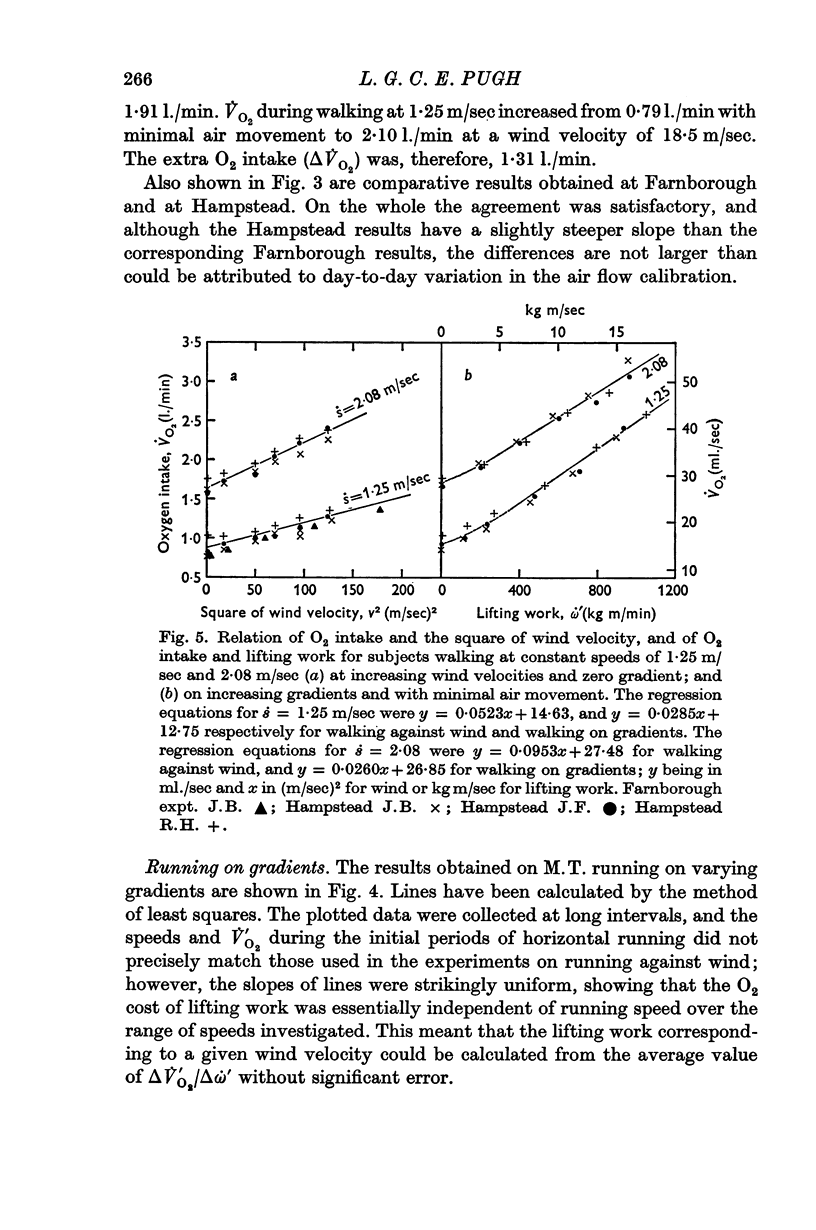
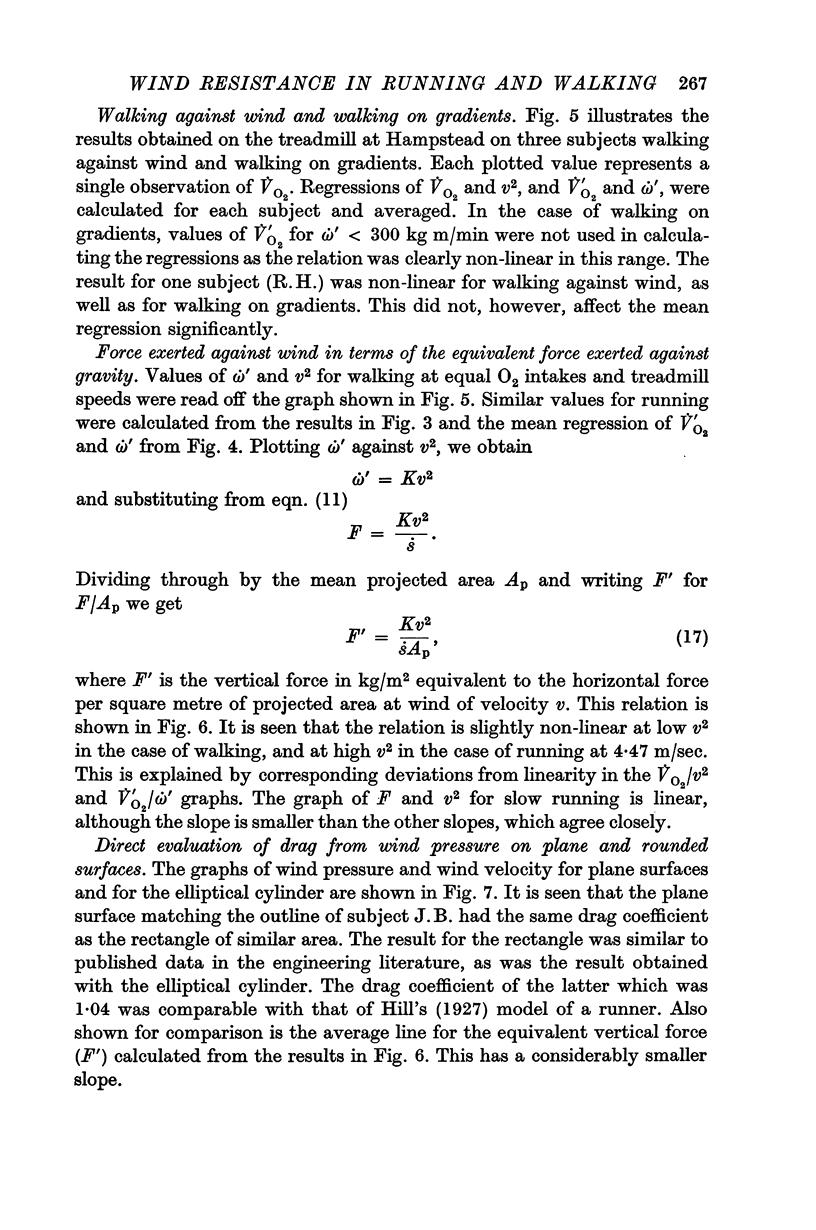
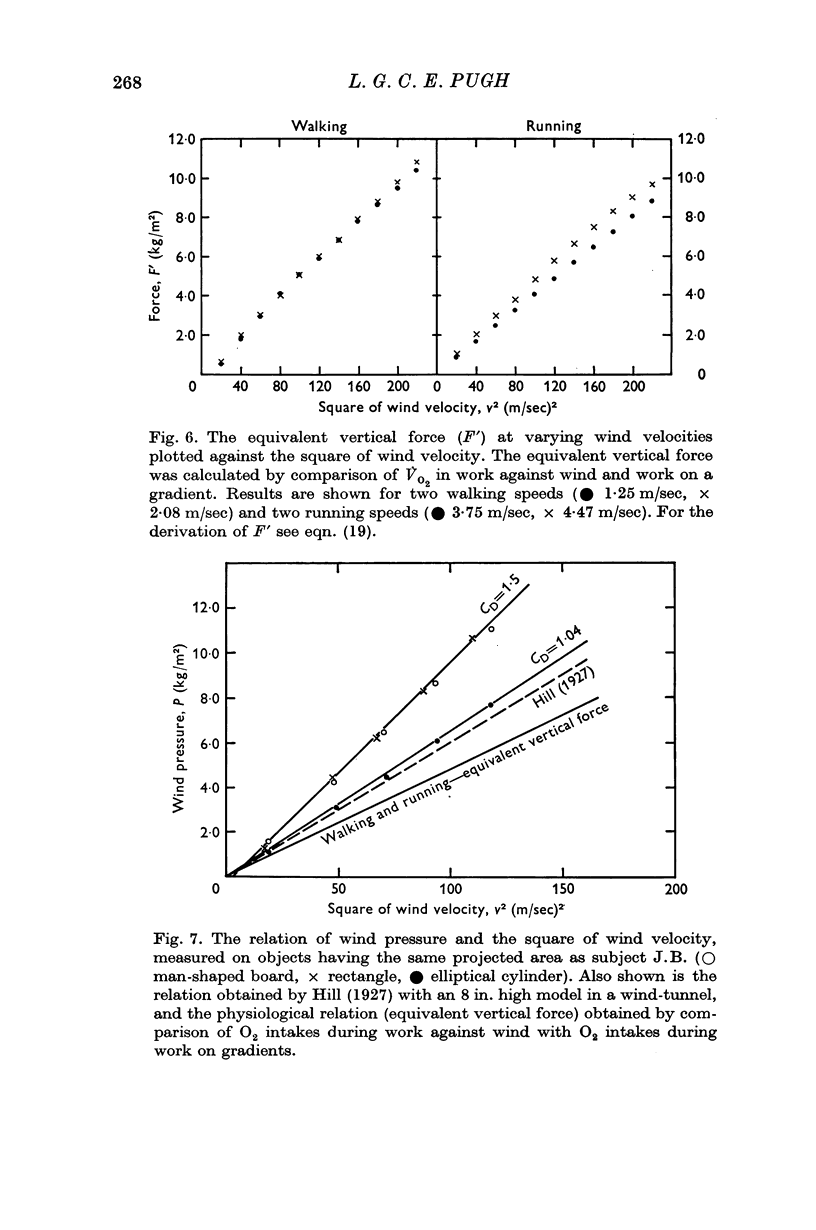
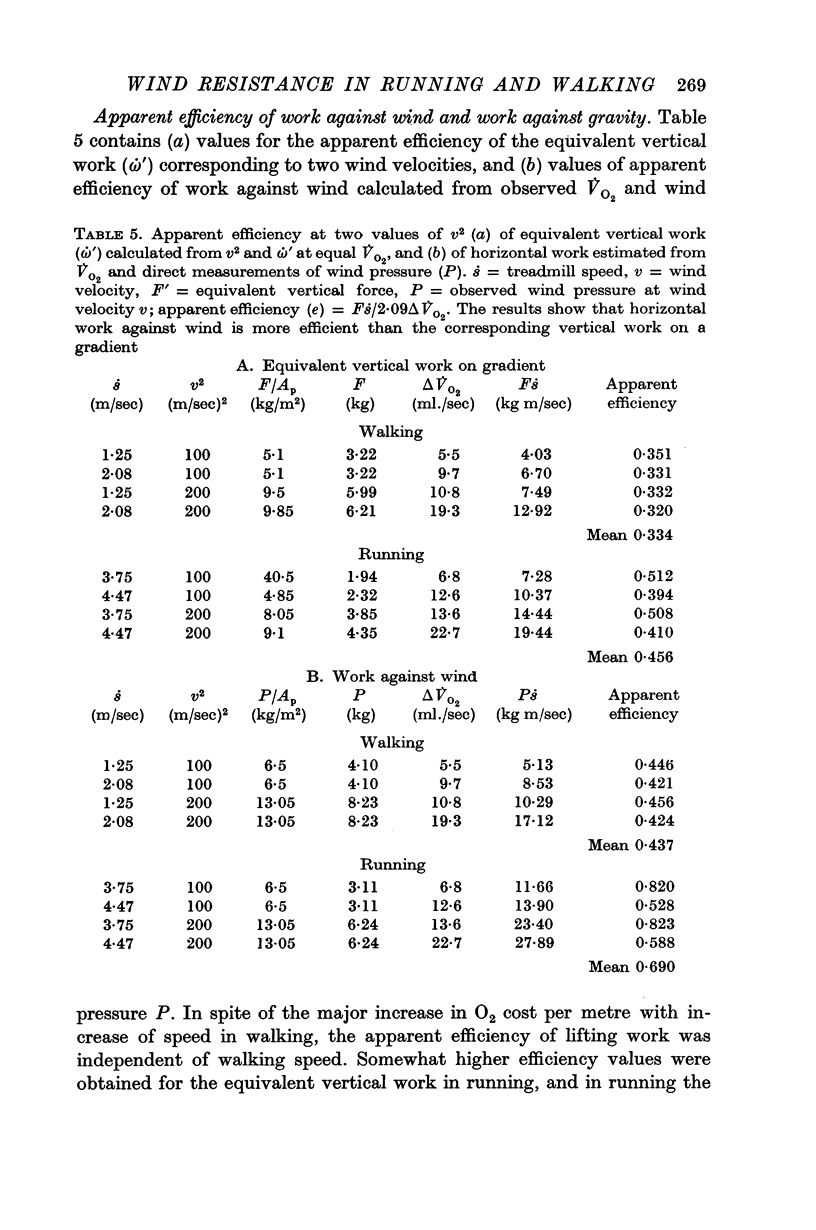
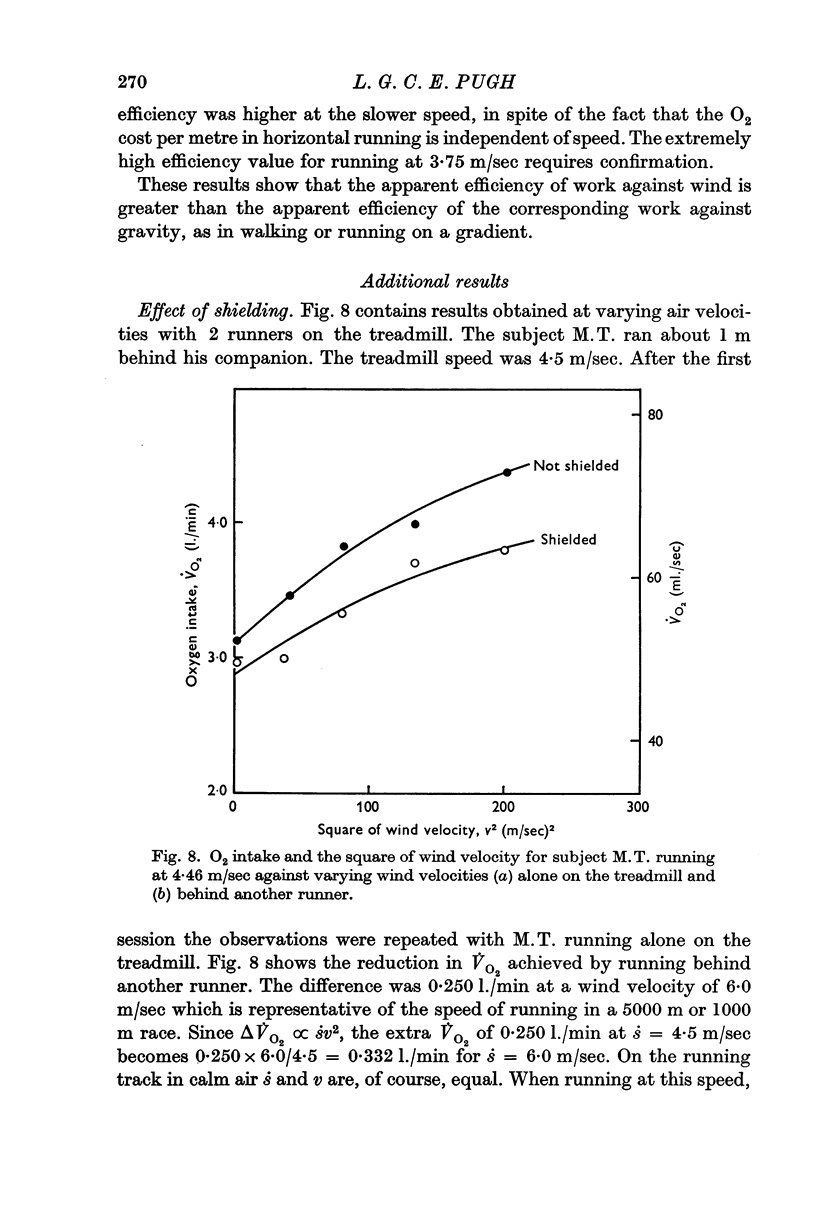
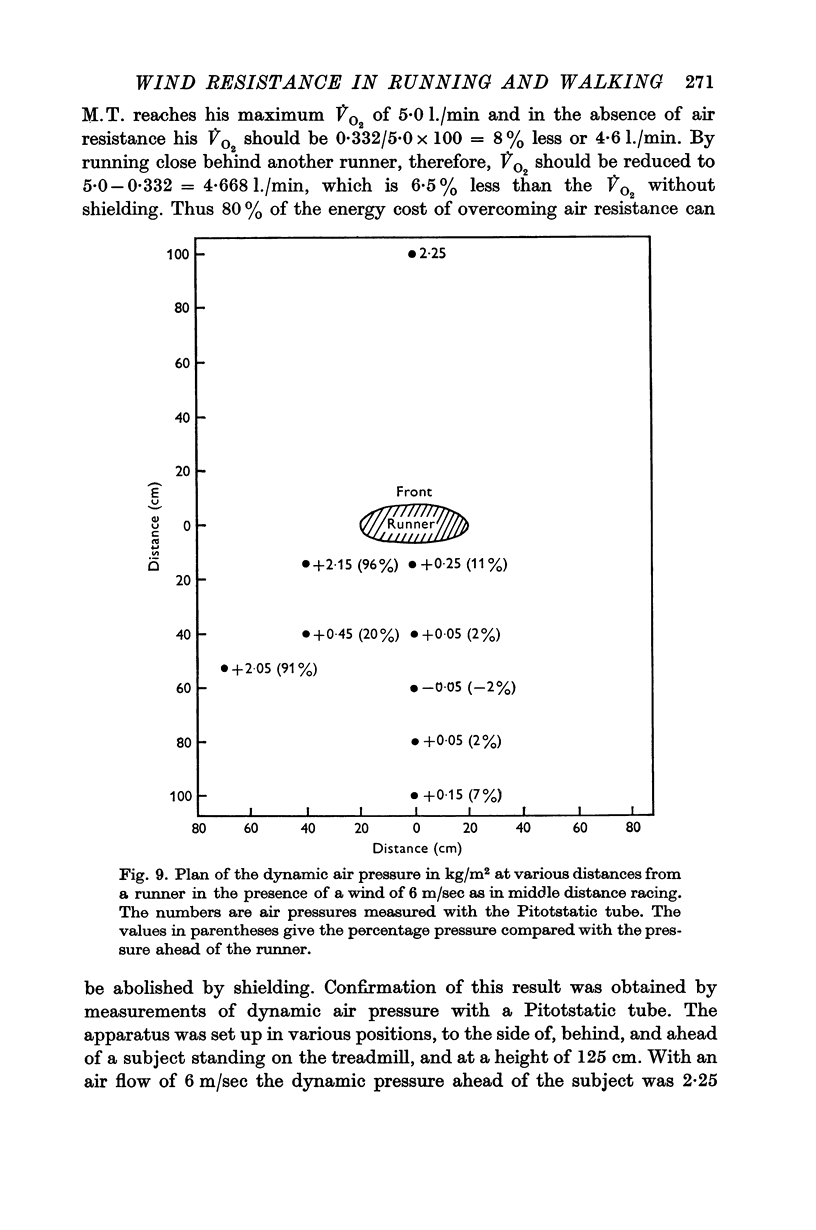
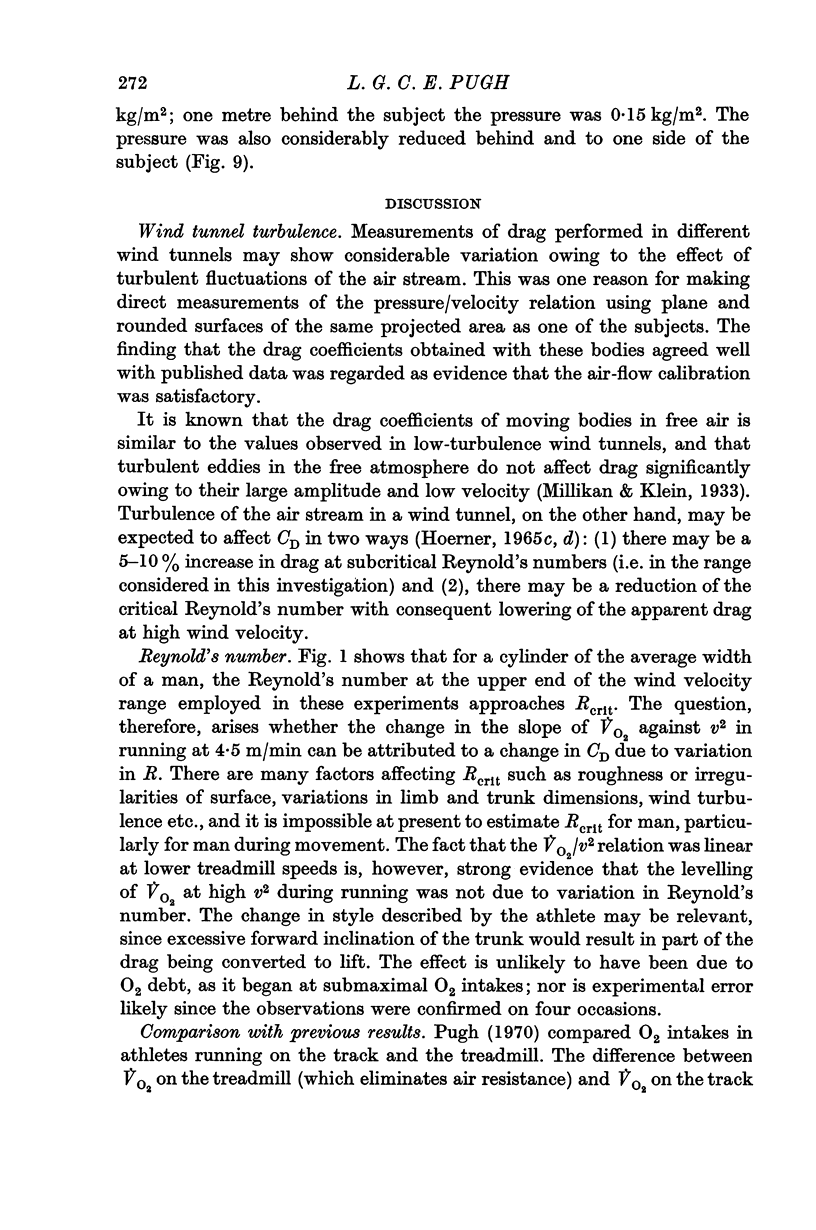
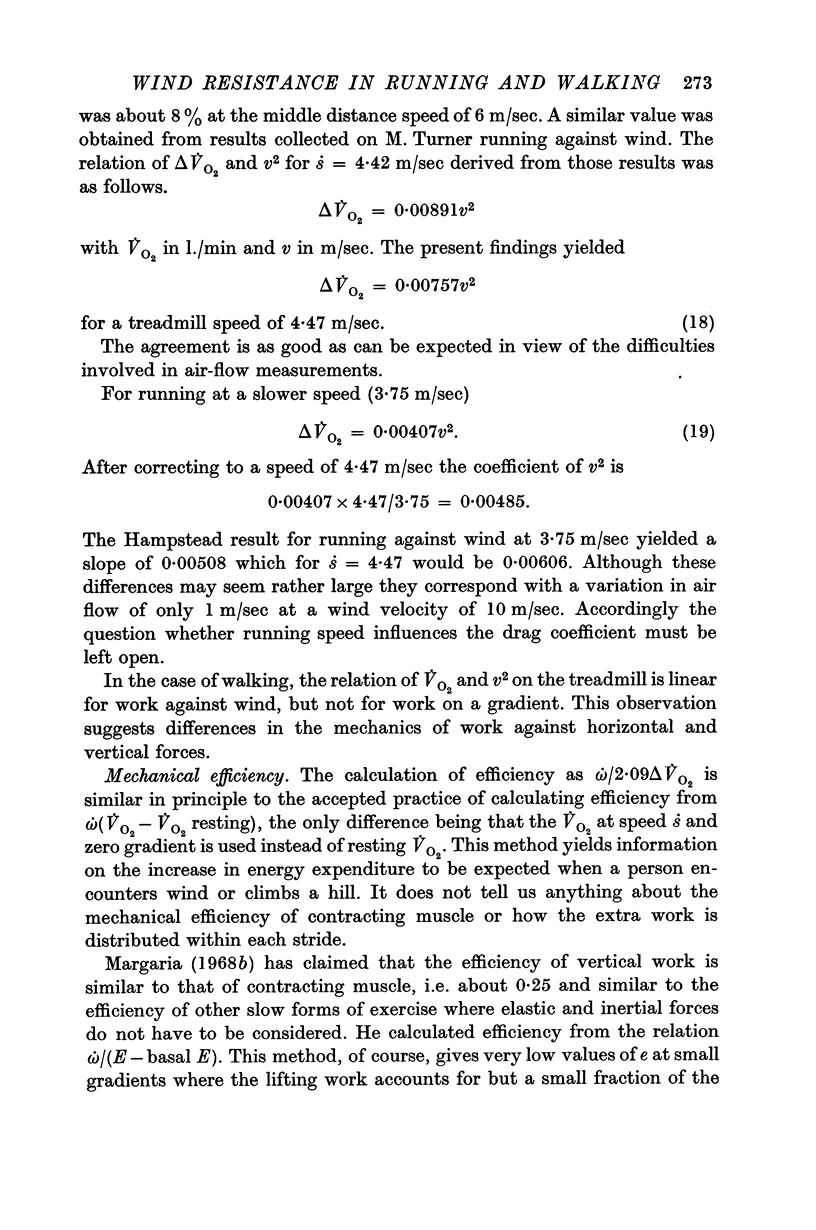
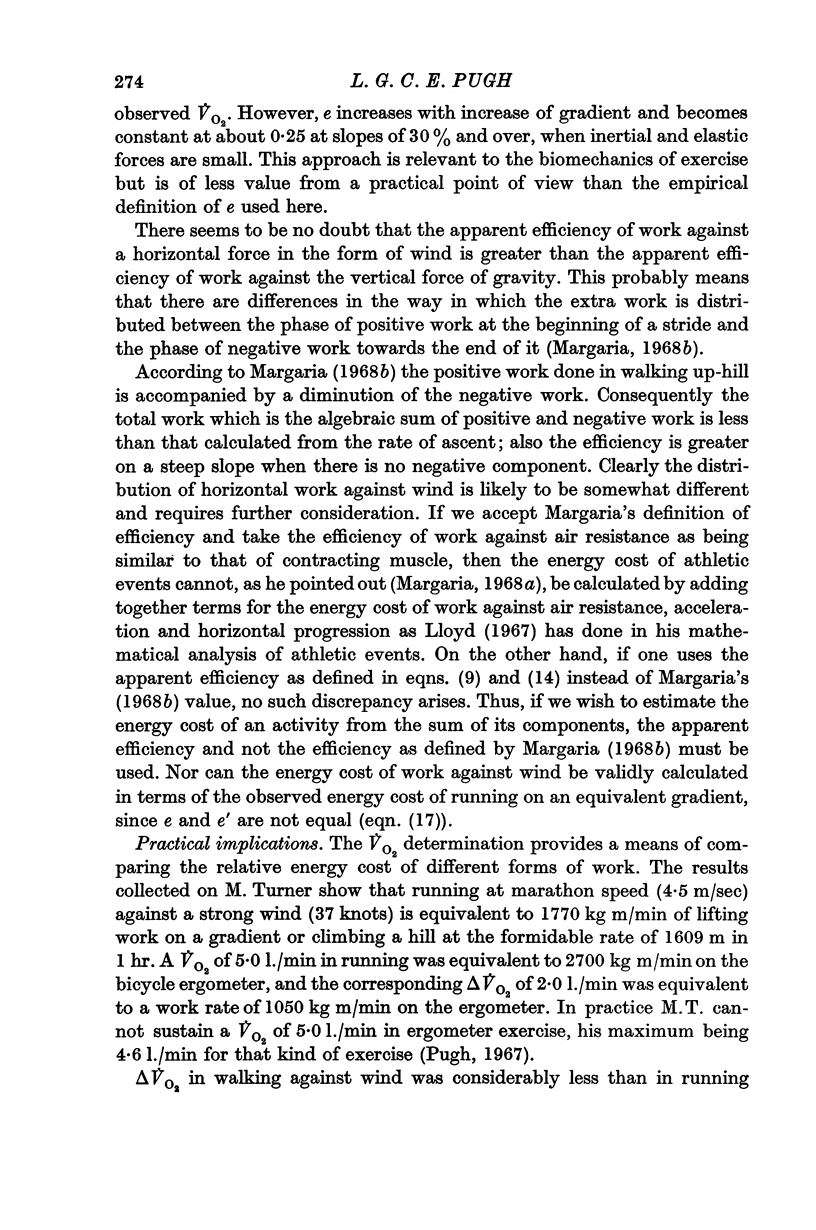
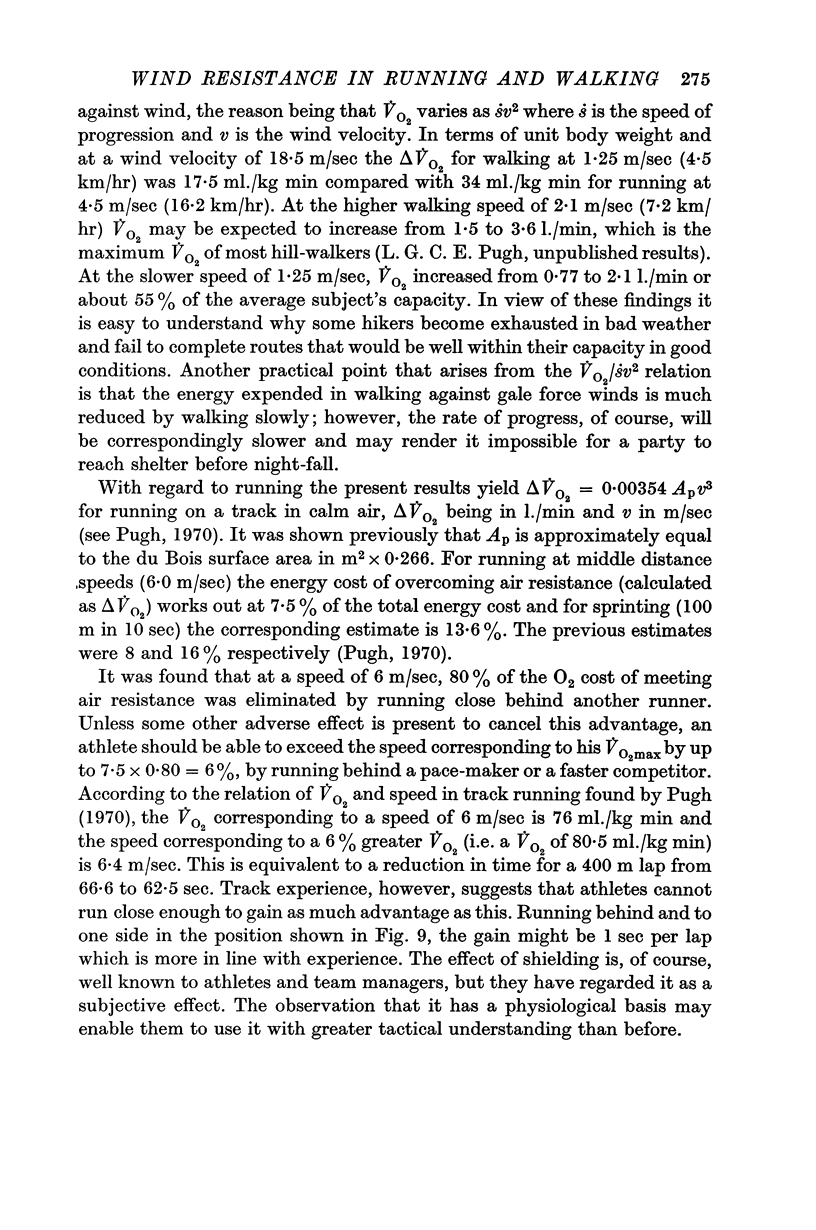
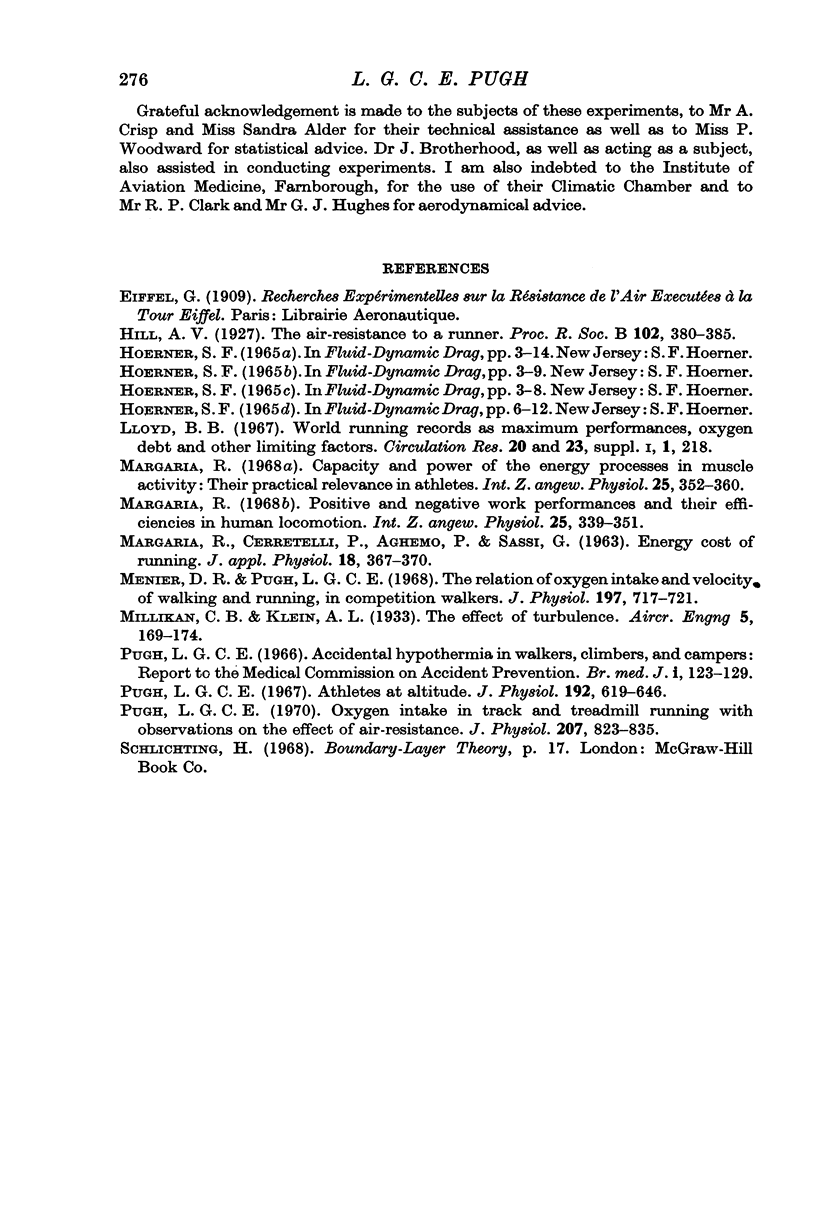
Selected References
These references are in PubMed. This may not be the complete list of references from this article.
- MARGARIA R., CERRETELLI P., AGHEMO P., SASSI G. Energy cost of running. J Appl Physiol. 1963 Mar;18:367–370. doi: 10.1152/jappl.1963.18.2.367. [DOI] [PubMed] [Google Scholar]
- Margaria R. Capacity and power of the energy processes in muscle activity: their practical relevance in athletics. Int Z Angew Physiol. 1968 May 28;25(4):352–360. doi: 10.1007/BF00699625. [DOI] [PubMed] [Google Scholar]
- Margaria R. Positive and negative work performances and their efficiencies in human locomotion. Int Z Angew Physiol. 1968 May 28;25(4):339–351. doi: 10.1007/BF00699624. [DOI] [PubMed] [Google Scholar]
- Menier D. R., Pugh L. G. The relation of oxygen intake and velocity of walking and running, in competition walkers. J Physiol. 1968 Aug;197(3):717–721. doi: 10.1113/jphysiol.1968.sp008584. [DOI] [PMC free article] [PubMed] [Google Scholar]
- Pugh L. G. Accidental hypothermia in walkers, climbers, and campers: report to the Medical Commission on Accident Prevention. Br Med J. 1966 Jan 15;1(5480):123–129. doi: 10.1136/bmj.1.5480.123. [DOI] [PMC free article] [PubMed] [Google Scholar]
- Pugh L. G. Athletes at altitude. J Physiol. 1967 Oct;192(3):619–646. doi: 10.1113/jphysiol.1967.sp008321. [DOI] [PMC free article] [PubMed] [Google Scholar]
- Pugh L. G. Oxygen intake in track and treadmill running with observations on the effect of air resistance. J Physiol. 1970 May;207(3):823–835. doi: 10.1113/jphysiol.1970.sp009097. [DOI] [PMC free article] [PubMed] [Google Scholar]


